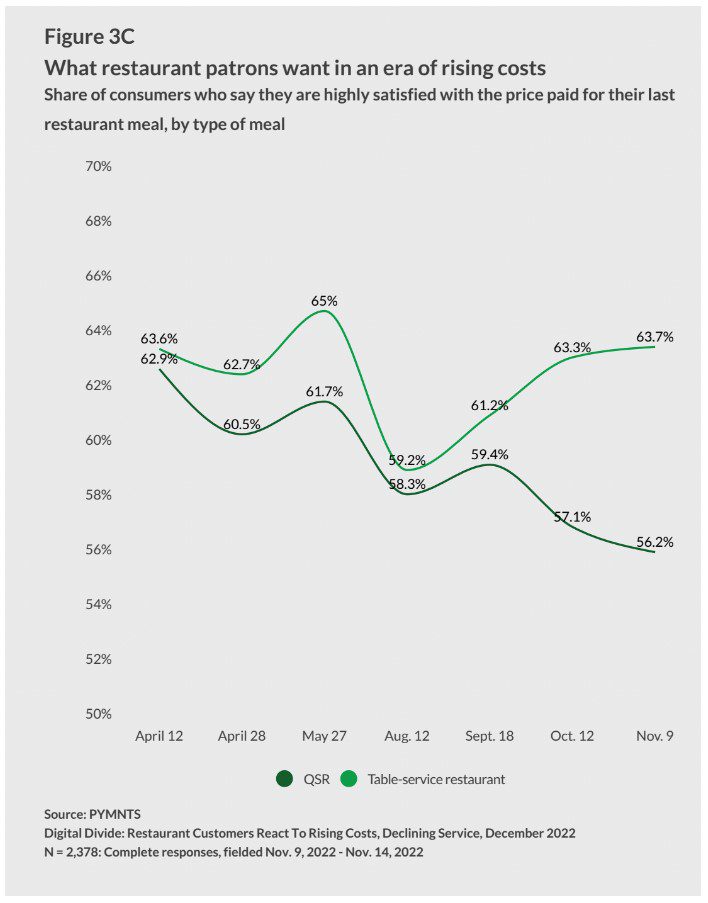
Inflation-weary consumers are growing increasingly disappointed with quick-service restaurants’ (QSRs) food pricing.
By the Numbers
Research from the latest edition of PYMNTS’ Digital Divide study, “The 2022 Restaurant Digital Divide: Restaurant Customers React to Rising Costs, Declining Service,” which drew from a census-balanced survey of 2,378 U.S. restaurant patrons, found that a declining share of QSR customers are “highly satisfied” with the price they paid for their last restaurant meal. In November, the portion was down to 56% from 58% three months prior and 62% six months prior.
In contrast, the share of diners that reported the same level of satisfaction at full-service restaurants (FSRs) is holding more or less steady, with some fluctuations. In November, the share was at 64%, roughly the same as it was when consumers were surveyed back in April and up five points from three months prior.
The Data in Action
FSRs, especially independent FSRs, may not realize the leeway that their consumers are giving them when it comes to pricing items in this difficult time.
Indeed, Nomie Hamid, founder and CEO of digital food hall company Virtual X Kitchen, noted in an interview with PYMNTS’ Karen Webster as part of our SMB TV series, which is available Thursday nights at 10 p.m. and is presented in partnership with PayPal, that many small restaurants are underestimating their ability to raise prices.
“I have been to numerous mom-and-pop restaurants, and I love going to them and supporting them, and when I look at their pricing, I am just amazed at how inexpensive it is,” Hamid said. “But then I see that they’re working on very extreme skeletal shifts, where they have only two or three people working … where they could use other bodies. But why aren’t the other bodies there?”
He added that the “fear factor” of losing customers is keeping them from implementing the price increases they need to give them room in the budget to keep the restaurant staffed.
